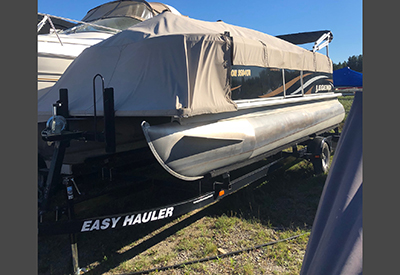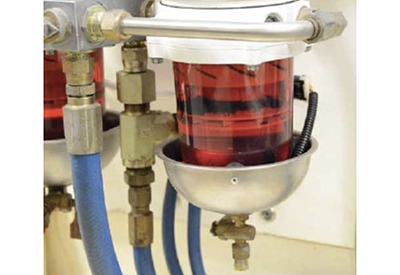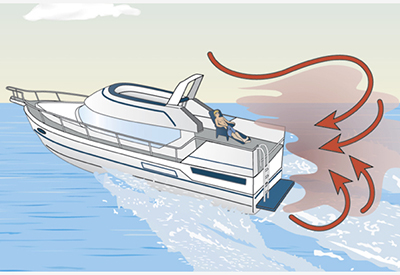GFCI and ELCI protection
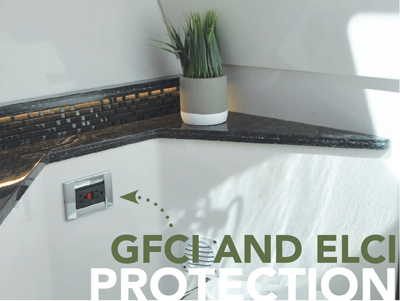
By Andrew McDonald
I’m often asked to take a look at a survey to complete repairs at the request of a boat owner’s insurance company. Over the years, I’ve noticed that there are some items that are considered much lower ‘risk’, than others when identified on a survey. Over the past few years, there is one item that stands out so much that I can guess it before even reading the survey. And, it’s for good reason. It’s an item that I hope is never overlooked, and that boat owners should take seriously – especially when looking at purchasing an older boat; protection against stray current in AC (110V) systems.
GFCI
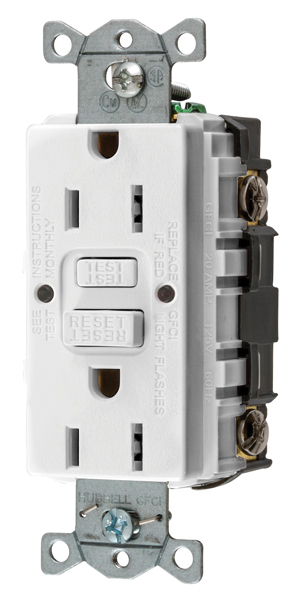 A GFCI outlet – note the ‘test’ and ‘reset’ buttons, distinguishing it from traditional outlets.
A GFCI outlet – note the ‘test’ and ‘reset’ buttons, distinguishing it from traditional outlets.
One way to protect against stray current (and one that is often required by insurance providers) is by installing GFCI (Ground Fault Circuit Interrupter) outlets.
Here’s why they’re important. On a typical set-up, the AC breaker panel will have one (or more) breakers dedicated to the outlets on board.
Imagine that there are three outlets that run along the port side of the boat, and three outlets that run along the starboard side. Each series (three port and three starboard) have a dedicated 10A breaker on the main AC panel. So, imagine you have a hairdryer plugged in, the dryer heats up and draws more than 10A and the breaker trips. It is doing exactly what it’s supposed to. So, why the need for additional GFCI protection?
The vessel’s survey identifies a lack of GFCI outlets, and the insurance company reviewing the survey has asked that GFCI outlets be added before coverage is offered. Why the added protection? On the outside, a GFCI just looks like an additional circuit breaker. There are two buttons on the front: The upper button is labelled ‘Reset’, the lower ‘Test’. It seems awfully redundant if all three port-side plugs are protected by a single 10A breaker, that each individual outlet is also circuit protected, right?
The answer is: A GFCI outlet offers a completely different type of protection than the breaker on the AC panel.
Here’s how it all works:
The AC panel breakers are used to protect against overcurrent (too much current running through the circuit), and the breaker trips before the circuit becomes overloaded, (which potentially would cause the wiring to overheat).
The GFCI is designed to protect against ground faults – which are most often caused by water or moisture entering the circuit. Remember the old adage: water and electricity don’t mix.
The AC wiring on your boat is a tri-plex wire – and to really oversimplify things – the black (hot) wire runs current to the appliance, the white (neutral or grounded) wire completes the circuit back to the source. The green (grounding) wire is present as a safety feature. In an ideal world, current never flows through the green (grounding) wire. But – in a circumstance where the black (hot) wire touches the casing of the outlet, or perhaps the black (hot) wire inside an appliance touches the metal casing of that appliance, the green (grounding) wire will provide a path for the current to flow, keeping the outlet, appliance and the boater safe.
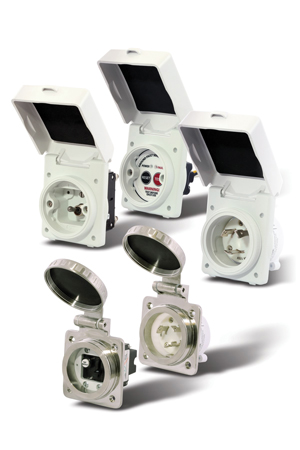 Shore power inlets – this is where dockside AC voltage will enter a boat.
Shore power inlets – this is where dockside AC voltage will enter a boat.
The most common path, in wet environments (like on a boat…or in a bathroom, kitchen, or in the out-of-doors) for electricity to run from the black (hot) wire in an unexpected way, is when water has entered and current flows along the path that the water provides (perhaps from the hot wire to the casing of the appliance). When this happens, the green (grounding) wire is energized, and immediately provides a path (from the appliance’s casing) to ground.
Well – on a boat, the green (grounding) wire runs to a common grounding point (and could potentially run along every other appliance and receptacle in its path). Essentially, moisture entering one receptacle (or appliance), could lethally energize the entire boat. In more simple terms: water leaking into a receptacle in the head could allow current to flow to the galley, salon, engine spaces and cockpit. Without even realizing it, touching a metal rail, hot water tank, or galley faucet could lead to a shock or electrocution.
Here’s where GFCI’s come in: They are designed to trip, breaking the path of this potentially lethal current In less than 1/30th of a second, the moment it senses current flowing through the green (grounding) wire. It’s an added protection, to stop current from energizing unexpected areas.
It can’t be overstated that Shore power, and the power running through the receptacles aboard, carry enough current to be lethal. Even if your surveyor hasn’t added it, or your insurance company hasn’t asked for an upgrade, take the time to check your outlets and confirm that each is GFCI rated. Manufacturers also recommend that GFCI outlets be tested once per month, to confirm that they are shutting off current flow correctly.
ELCI

A pigtail adaptor with an ELCI component.
There’s more to this story – and it stretches beyond the outlets found aboard. Similar protection is needed when plugging into shore power.
In an ideal world, current will flow from the marina’s power lines, along the dock to each pedestal. When a boat is plugged in, current will flow from the shore-power pedestal along the shore-power cord, into the boat and into each appliance and outlet that is powered on. The simplified theory in AC wiring is that the black (hot) wire will carry current to the appliance. The white (neutral or grounded) wire carries current back to its source. The green (grounding) wire is not normally current-carrying, and is used as a way for stray current to make its way to a safe source (ground).
However, when looking at a boat that is plugged into shore-power, the ‘safe ground’ that we’re talking about isn’t aboard the boat. Rather, it’s back onshore. If a fault is found between the shore power pedestal and any AC appliance or component aboard, the stray current will find its way back to the shore power’s grounding point. Often, the most direct route for this stray current to flow is through the water between the boat and shore (or even through the water between two boats moored alongside each other, and back to shore).
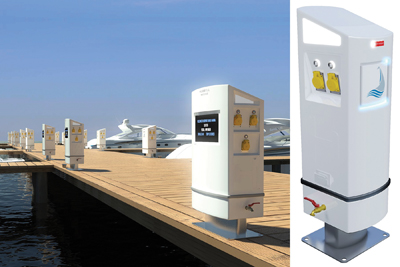 Shore-side pedestals, providing power at each dock, protected by shore-side breakers.
Shore-side pedestals, providing power at each dock, protected by shore-side breakers.
A number of results can come of this: In the case where stray current is running between boats, one boat with a fault can cause the adjacent boat to have major corrosion issues.
Underwater machinery, through-hulls, props and drives can be drastically damaged by this stray current. A more serious by-product is the danger of ‘electric shock drowning’ – a scenario where a swimmer moving through the water that has become energized between boats and/or shore arrives in the path of the stray current, paralyzing or killing the swimmer!
Enter the ELCI breaker. This device is designed to detect amperage differences in the current running along the black (hot) wire, and the current returning via the white (neutral or grounded) wire. The amount of current running to and from should be the same. If there is a difference (meaning that the current has strayed, potentially via the green (grounding) wire), the ELCI breaker will trip, preventing damage or injury until the fault can be found.
Ideally, the ELCI breaker will be found in two spots: On the marina shore-power pedestal, and on your boat, between the shore-power inlet and the AC appliance breakers
Protecting your boat, your marina neighbours, and your family and guests aboard from AC electrical issues is best achieved by looking at both sides of the system: From shore power into the boat (by adding an ELCI breaker), and from the main AC breaker panel to the outlets and appliances (by installing GFCI outlets).
As always – if you have questions or concerns about your boat’s electrical, contact a qualified marine technician to review your current set-up and make recommendations for repair or upgrade.

